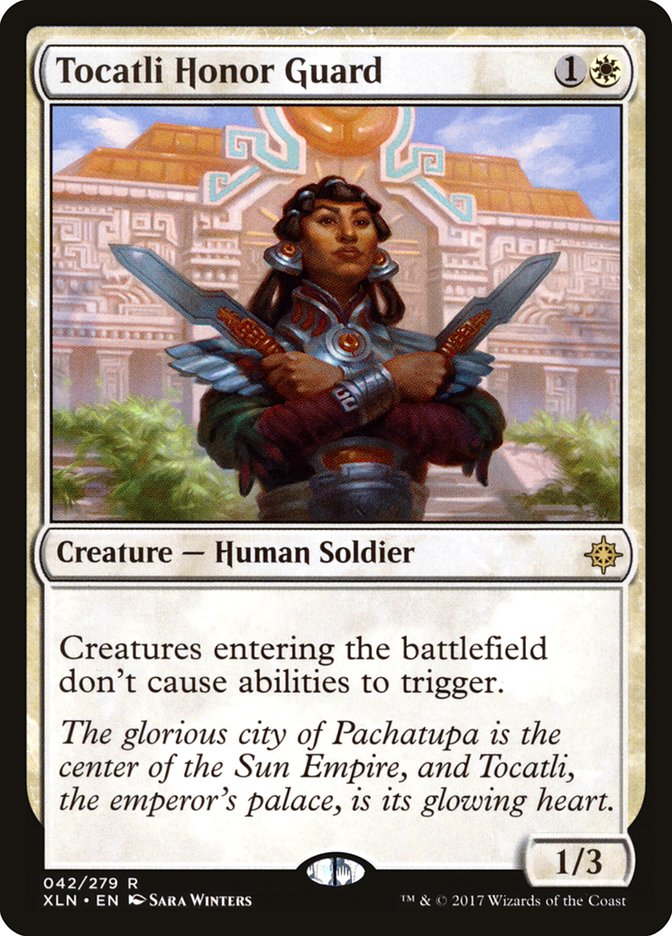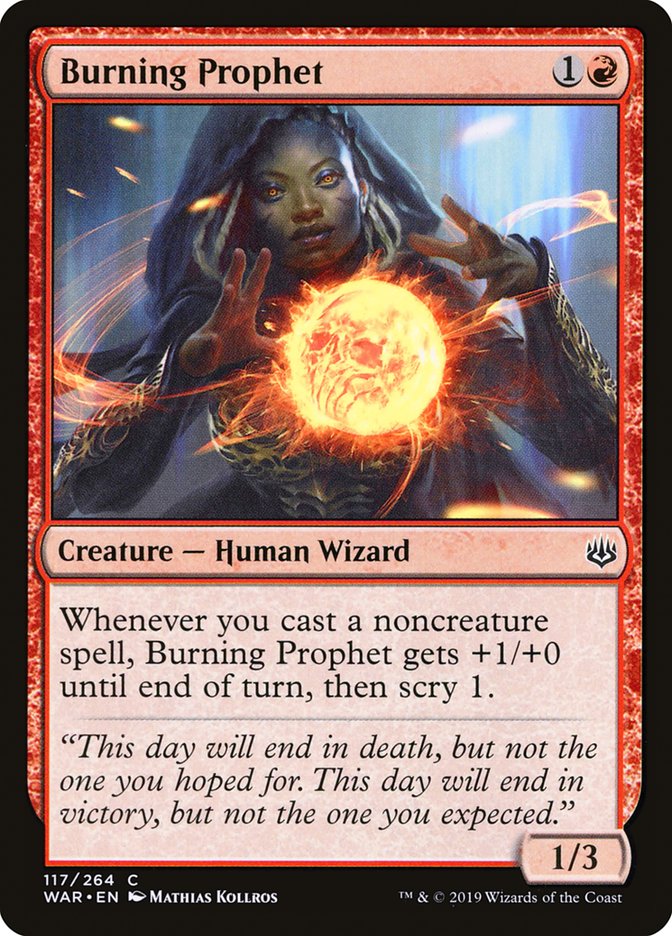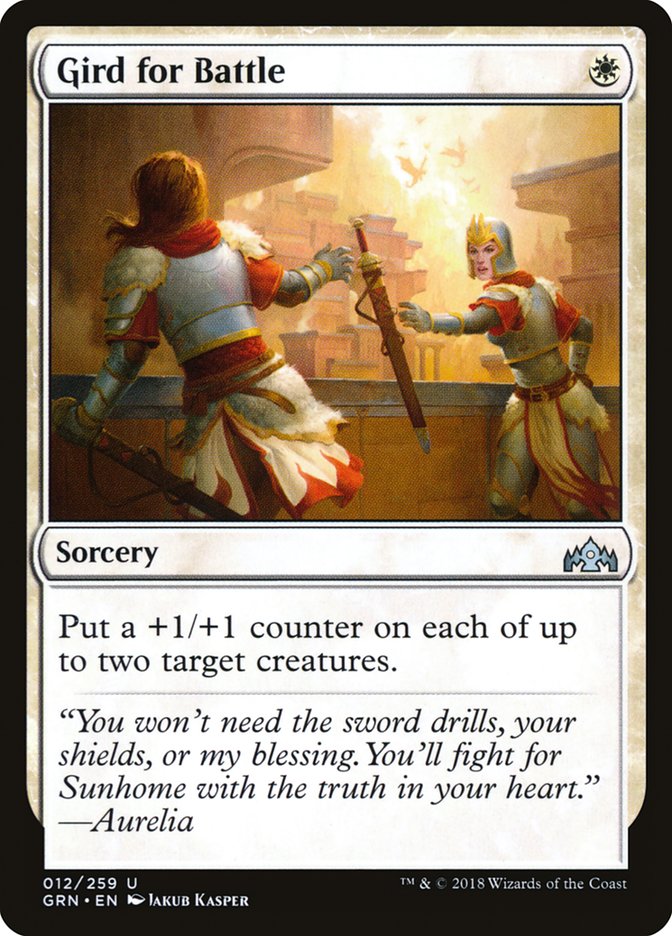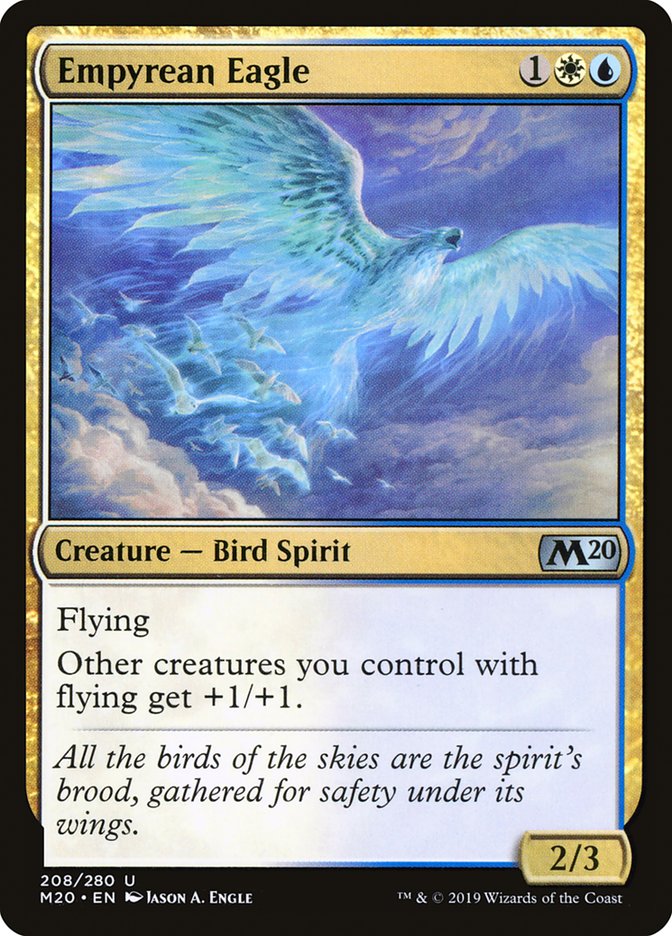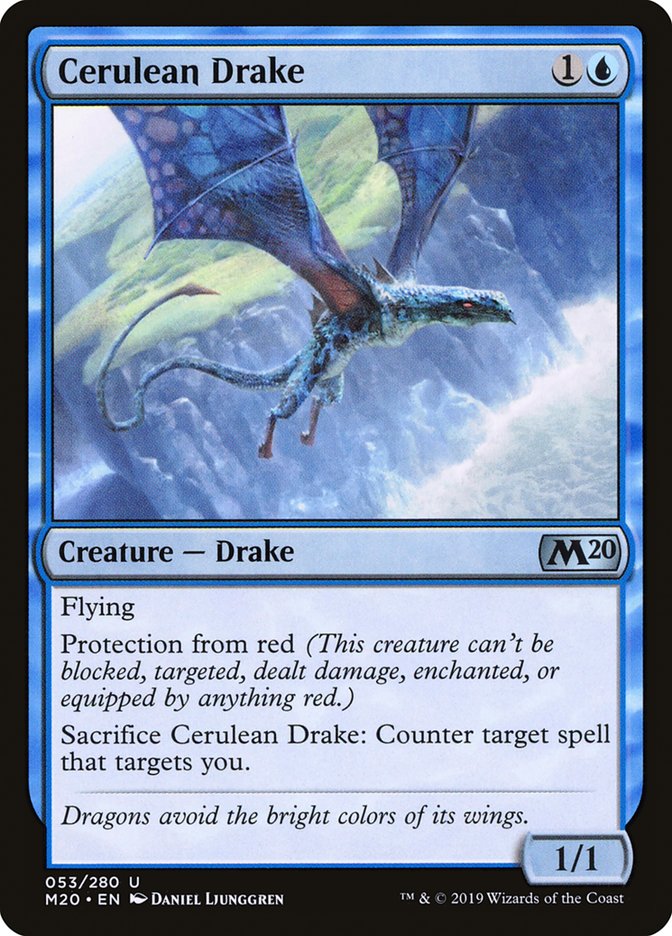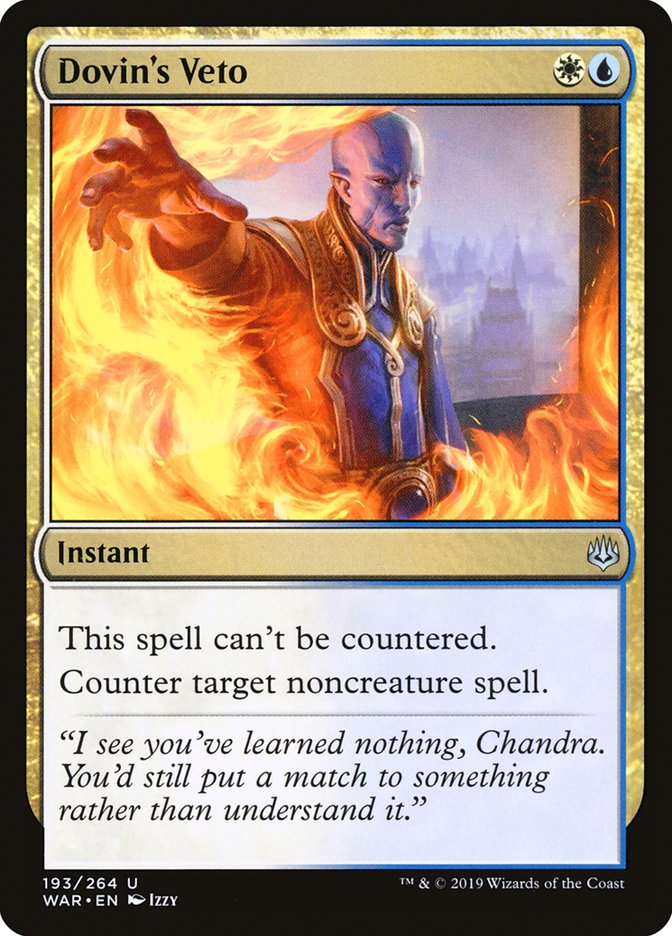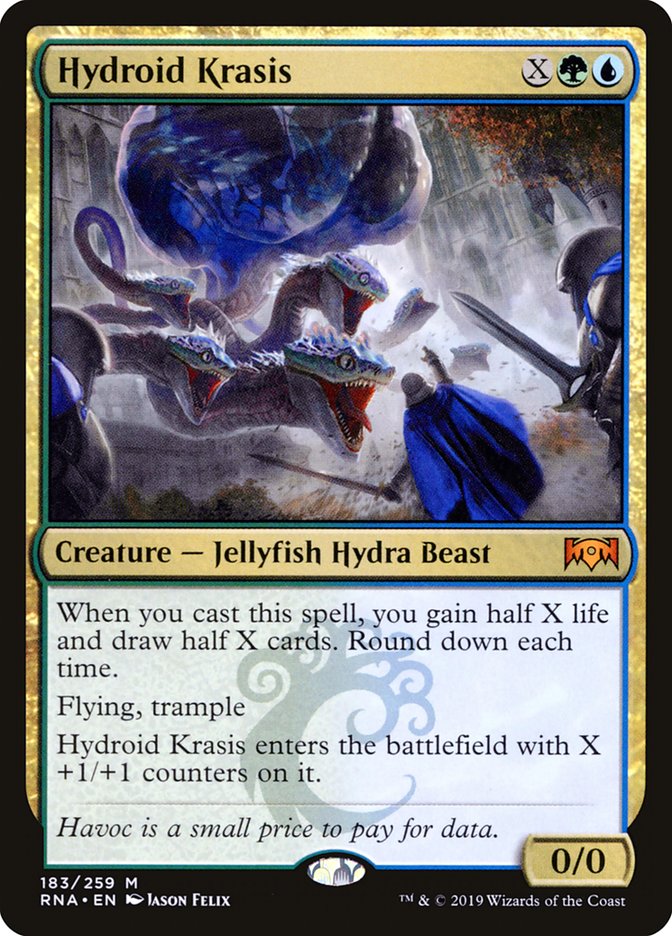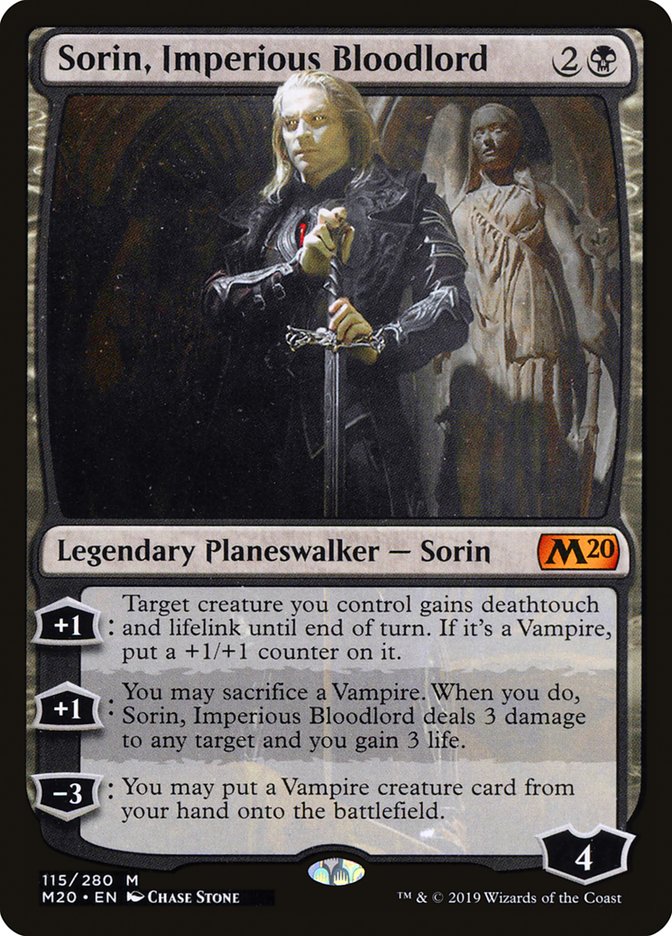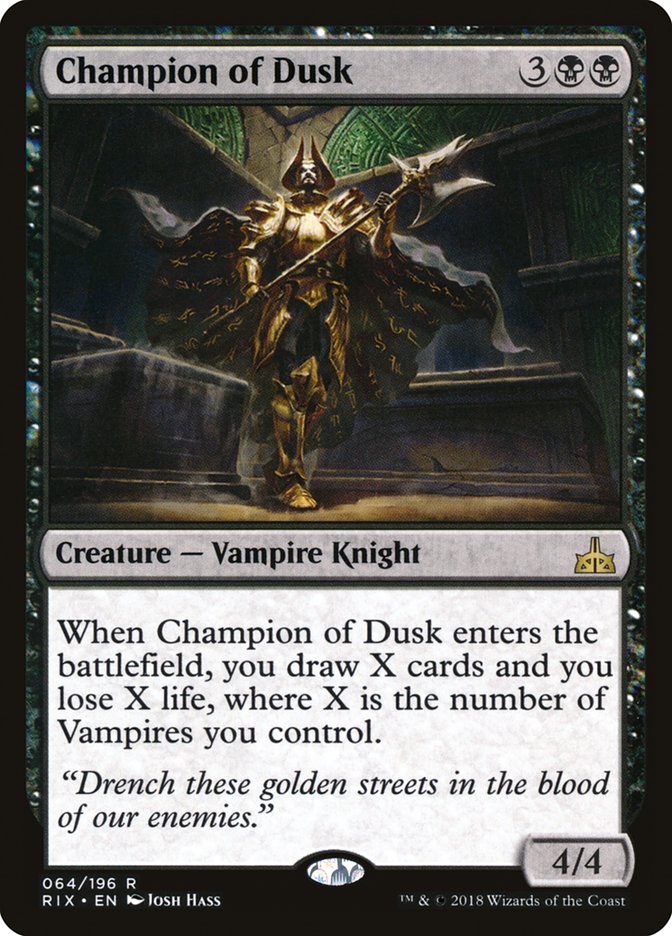As many players set out to answer the question, “What’s the best Risen Reef deck?” I wonder if that’s even a profitable question to consider. Why join them when you can beat them? Whatever they settle on, it will almost certainly lose to Tocatli Honor Guard, an easy card to play in a wide variety of strategies that also happens to line up well against the entire Cavalier cycle, Mono-Red Aggro, and Explore strategies, all while having utility against a wide variety of other cards and decks.
Tocatli Honor Guard may or may not be correct to play maindeck, but it’s so powerful out of the sideboard that it should be an important consideration in deckbuilding and selection even if you don’t play it in your starting 60.
Today, I’m going to look at a wide range of white strategies that make good use of Tocatli Honor Guard for those of you who’d prefer to simply ignore Risen Reef and Omnath, Locus of the Roil.
Let’s start with what I see as the safest choice.
Creatures (20)
- 4 Tocatli Honor Guard
- 1 Aurelia, Exemplar of Justice
- 1 Tajic, Legion's Edge
- 2 Burning Prophet
- 4 Dreadhorde Arcanist
- 4 Tenth District Legionnaire
- 4 Feather, the Redeemed
Planeswalkers (1)
Lands (22)
Spells (17)
Sideboard

Last season, Boros Feather was a weird gimmicky deck that you could build but clearly wasn’t quite there. I believe the addition of Gods Willing and Temple of Triumph have put it over the top to make it a real contender in the format that people have found early success with. As it happens, the deck naturally doesn’t want to play any enters-the-battlefield abilities, wants three-toughness creatures to pair with Reckless Rage, and taxes opposing removal with extremely high-impact creatures, all of which combine to make it a perfect home for Tocatli Honor Guard.
Tocatli Honor Guard has diminishing returns, so I could understand splitting them between the maindeck and sideboard, particularly to make room for Tomik, Distinguished Advokist if you’re concerned about Nissa, Who Shakes the World. You could also replace Burning Prophet with Tomik, but in a deck that’s looking to string the right combination of cards together like this one, I think scrying as much as possible is very valuable and I expect Burning Prophet to perform very well here.
One card I’ve left out is Gird for Battle. I don’t think it’s a very strong card without Feather and it doesn’t seem necessary if you’re keeping Feather on the battlefield. It really leans into the deck’s weaknesses unless you expect to play against a lot of bigger Angels that you need to grow to attack through.
Speaking of bigger Angels, another similar deck that I like the look of is Boros Angels.
Creatures (25)
- 3 Lyra Dawnbringer
- 3 Shalai, Voice of Plenty
- 4 Resplendent Angel
- 3 Aurelia, Exemplar of Justice
- 4 Tomik, Distinguished Advokist
- 4 Feather, the Redeemed
- 4 Bishop of Wings
Lands (25)
Spells (10)
Sideboard

I like the creatures here, and Bishop of Wings looks amazing in this deck against other aggressive decks. Given how well the deck matches up against opposing creatures, I’m not sure that it needs four maindeck Lava Coils rather than a more versatile spell like Lightning Strike, and I suspect the sideboard could use Legion Warboss to better pressure Nexus of Fate strategies, but I think this deck looks well-positioned against opposing creature decks, so it’s a strong starting point.
Tocatli Honor Guard is relegated to the sideboard here due to conflict with Bishop of Wings and the fact that the core strategy is fundamentally good against creatures, which makes it less necessary, but I like that Felix (xfile) decided to play four in the sideboard despite that.
My take would look like this:
Creatures (24)
- 3 Lyra Dawnbringer
- 3 Shalai, Voice of Plenty
- 4 Resplendent Angel
- 3 Aurelia, Exemplar of Justice
- 3 Tomik, Distinguished Advokist
- 4 Feather, the Redeemed
- 4 Bishop of Wings
Lands (25)
Spells (11)
Sideboard

Moving Gods Willing to the main helps the deck against control and freeing up sideboard space for Legion Warboss helps against combo, and I think the deck can afford to become weaker against opposing creatures.
Moving on to another approach, Azorius Skies gained a lot from Core Set 2020.
Creatures (28)
- 4 Siren Stormtamer
- 4 Rustwing Falcon
- 4 Healer's Hawk
- 4 Venerated Loxodon
- 2 Tomik, Distinguished Advokist
- 4 Empyrean Eagle
- 4 Spectral Sailor
- 2 Sephara, Sky's Blade
Planeswalkers (3)
Lands (22)
Spells (7)
Sideboard

This deck is full of flyers and abundant ways to make them stronger. Favorable Winds is extremely important to make sure your creatures don’t die to Goblin Chainwhirler and to help your Empyrean Eagle stick against red decks to protect your other creatures. This deck is great at keeping opposing planeswalkers off the battlefield, which means that it can actually cast the Dovin’s Vetoes in the sideboard.
The sideboard is very simple and streamlined – Tocatli Honor Guard replaces Venerated Loxodon against decks with lots of enters-the-battlefield triggers, Cerulean Drake helps beat up red decks, Dovin’s Veto protects your early advantage against control and Nexus of Fate / Flood of Tears decks, and Curious Obsession helps run over people who don’t play much removal.
Unfortunately, the biggest problem with this strategy in my experience has always been the mana, which is still somewhat inconsistent with only eight multicolor lands, but honestly, the London Mulligan could be a huge boon to aggro decks with shaky mana in general, so I think it’s worth trying this out to see if the biggest improvement wasn’t even a card at all.
While we might typically think of Bant Midrange decks as leaning on enters-the-battlefield abilities, it’s actually possible to build a Bant Ramp deck that leans on planeswalkers and cast triggers instead:
Creatures (27)
- 4 Llanowar Elves
- 2 Tocatli Honor Guard
- 2 Shalai, Voice of Plenty
- 4 Hydroid Krasis
- 4 Incubation Druid
- 4 Paradise Druid
- 3 God-Eternal Oketra
- 4 Leafkin Druid
Planeswalkers (6)
Lands (23)
Spells (4)

God-Eternal Oketra and Hydroid Krasis can feel a bit like they have abilities that trigger off entering the battlefield, but since they’re actually cast triggers, Tocatli Honor Guard lets them go, and you’re free to go off while your opponent’s Risen Reef is just a three-mana 1/1.
Mono-Blue Aggro is one deck that doesn’t mind Tocatli Honor Guard too much, but it’s essentially never beating Turn 1 Leyline of Abundance, Llanowar Elves into Turn 2 Shifting Ceratops. This midrange ramp deck is built to maximize free wins on little card selection choices like Shifting Ceratops and Tocatli Honor Guard that may not be perfect fits strategically with the deck’s core gameplan but line up extremely well against certain opponents while playing decently enough with the rest of the cards.
I think this distinction is worth calling out and discussing a little more. It’s important to understand why you’re making the card selections you’re making. The Level 1 version of Bant Ramp, the version that’s constructed in isolation to do its thing as well as it can, obviously wouldn’t play Tocatli Honor Guard. Not only is it generically the kind of card you’d only ever play if you were targeting certain opponents, but more fundamentally, this deck is looking to play a mana creature on Turn 2, not take a turn off to play a hate creature on Turn 2, and then it wants the spells that aren’t mana creatures to be high-impact finishers, not 1/3 creatures.
However, that doesn’t mean it’s necessarily wrong to play Tocatli Honor Guard. As it happens, against a certain portion of the metagame, Tocatli Honor Guard is as high-impact as a card you’d pay a lot more mana for, and in this case, it’s meaningfully stopping another midrange/ramp deck that might successfully go over the top of what you’re doing dead in its tracks, ensuring that you’ll go over the top of them.
I can claim that Tocatli Honor Guard is a “good fit” because it doesn’t negatively interact with any of my cards, but strategically, it’s certainly out of place. It’s important both to be able to identify that and to know when a card’s metagame positioning trumps its synergistic positioning, when it’s so good against other people that it doesn’t matter how well it actually fits in your deck.
If you’re mostly in the business of copying decks and maybe modifying them based on seeing which cards perform well and which don’t – perhaps on a more intuitive level based on which cards you find yourself hoping to draw – it might not be important to have a framework to discuss these things. But any time you’re working with other people, understanding this framework and these distinctions can be very important for framing your decisions in a way they can understand and learn from or productively disagree with.
Simply for the sake of comparison, Tocatli Honor Guard is a much cleaner strategic fit internally in a deck like Boros Feather because that deck is looking for sticky creatures with relatively high toughness that come down early to give you an outlet for your spells that target your creatures and a potential lightning rod to draw removal from your other important creatures. While Tocatli Honor Guard doesn’t do anything in a vacuum, its normal expected use and sizing make it a more natural fit in a deck like Boros Feather than Bant Ramp.
The last place to look to take advantage of Tocatli Honor Guard is some form of white aggro. My concern is that with the power level of Sorin, Imperious Bloodlord, I’m not sure that there’s much of a reason to play White Aggro over Vampires and Tocatli Honor Guard is a bad fit in Vampires due to not being a Vampire and anti-synergy with Champion of Dusk. I could be wrong, but I just don’t think advocating White over Vampires is very responsible at the moment.
All told, if you’re interested in beating Elementals, I’d recommend Boros Feather if you want a conservative approach with game against anything due to having a powerful proactive gameplan; Boros Angels if you want to beat up on aggressive creature decks like Red and Vampires; Azorius Skies if you expect a lot of planeswalkers, control decks, and slower midrange decks like Command the Dreadhorde; and Selesnya Ramp if you expect few sweepers and a lot of midrange and aggro decks.


